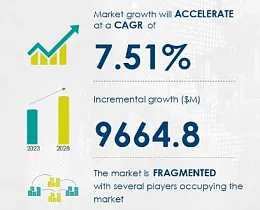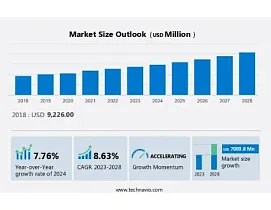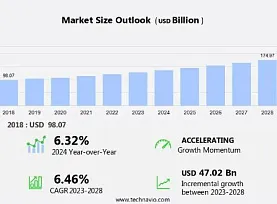
The market is experiencing significant growth due to the increasing energy consumption in both industrial and commercial buildings. AC systems in buildings, including industrial and commercial, consume a substantial amount of energy for space heating, cooling, and ventilation control. They play a crucial role in optimizing energy efficiency by monitoring temperature, input temperature, air pressures, and humidity levels. Urbanization and the rise of smart homes have led to an increased focus on energy-efficient solutions for residential buildings. They are being integrated into these systems to ensure optimal temperature, humidity, and air quality control. In addition, the integration of these in HVAC systems is becoming mandatory for ensuring indoor air quality. The market is expected to grow due to the increasing demand for energy-efficient solutions in vehicle cabins and passenger cars. The market is also driven by the need for humidity control in various applications, including industrial processes and space heating and cooling systems. Overall, the market is poised for growth due to the increasing focus on energy efficiency and indoor air quality control. Our researchers analyzed the data with 2022 as the base year, along with the key drivers, trends, and challenges. A holistic analysis of drivers will help companies refine their marketing strategies to gain a competitive advantage.
The market growth is notably propelled by advancements in temperature sensors, The market is witnessing significant growth due to the increasing adoption of smart homes and internet-connected devices. These play a crucial role in regulating energy consumption and maintaining optimal temperature and humidity levels in buildings. Advanced temperature control systems, such as digital programmable sensors and zoning systems, enable users to schedule energy-saving temperature adjustments and regulate temperatures in different zones. Additionally, the integration of smart building technology has led to the development of these for monitoring carbon dioxide, toxicity, and refrigerant levels, including the phase-out of R22 refrigerant and its impact on the ozone layer. Humidity and temperature sensors are essential components of HVAC systems, ensuring indoor air quality and energy efficiency. Hence, these factors are expected to drive the market during the forecast period.
Increasing focus on integrated building management systems is one of the emerging market trends. The market is gaining traction due to the growing emphasis on energy efficiency and cost reduction in both commercial and residential buildings. Smart homes and internet-connected devices are driving the adoption of advanced HVAC technology, including the integration of heating, ventilation, and air conditioning (HVAC) systems with lighting and other building management systems. This integration optimizes energy usage and regulates indoor environmental conditions, such as temperature, humidity, and air quality, monitored by these for carbon dioxide, toxicity, and refrigerant levels. The phase-out of R22 refrigerant, which harms the ozone layer, further boosts the demand for energy-efficient HVAC systems. Hence, these factors will drive the market during the forecast period.
Cybersecurity issues in HVAC control systems are major challenges impeding the market. The market is experiencing significant growth due to the integration of advanced technologies such as wireless connectivity and smart home automation in heating, ventilation, and air conditioning (HVAC) systems. This trend is prevalent in both residential and commercial sectors, as well as in industrial applications. However, the increasing use of internet-connected devices in HVAC systems poses a challenge in ensuring their cybersecurity. HVAC sensors, including temperature, humidity, carbon dioxide, and toxicity sensors, are susceptible to hacking. Modern HVAC systems employ refrigerants like R22 and advanced features such as ozone layer protection. Ensuring the security of these systems is crucial to mitigate potential risks and maintain optimal indoor environmental quality. Thus, such factors are expected to hinder the growth of the market during the forecast period.
The market forecasting report includes the adoption lifecycle of the market, covering from the innovator’s stage to the laggard’s stage. It focuses on adoption rates in different regions based on penetration. Furthermore, the report also includes key purchase criteria and drivers of price sensitivity to help companies evaluate and develop their market growth and forecasting strategies.
Companies are implementing various strategies, such as strategic alliances, partnerships, mergers and acquisitions, geographical expansion, and product/service launches, to enhance their presence in the market.
The research report also includes detailed analyses of the competitive landscape of the market and information about 15 market companies, including:



